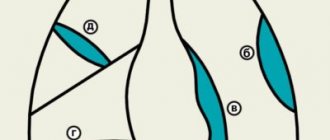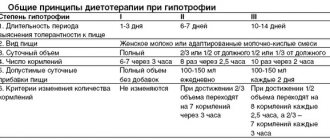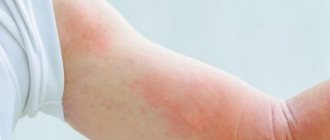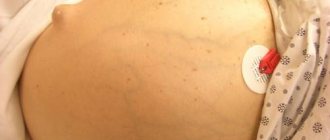Causes of a boil under the armpit
In the human armpit there are many hair follicles, as well as sweat glands, located close to each other. With intense sweating, there is a significant and rapid increase in the number of pathogenic bacteria, which, when penetrating the follicle, can provoke an inflammatory process. People call this disorder a “boil.”
The cause of such a violation may be the following provoking and predisposing factors:
- Failure to comply with personal hygiene rules when the patient rarely takes a shower or bath. In this case, intensive proliferation of microbes occurs in the armpit area, which leads to their penetration into the hair follicles.
- Excessively frequent hygiene procedures. If a patient frequently and excessively uses soap, gels and other products, the natural protective layer on the skin is destroyed. As a result, any microorganisms can provoke inflammation of the hair follicle.
- Use of aggressive deodorizing agents. Many products may contain components that disrupt the microflora in a particular area. That is why you should give preference to fragrance-free products, which are considered less aggressive.
- Weakening of the immune system due to colds. In many patients, with a decrease in the body's defenses, purulent lesions appear on the body.
- Shaving with untreated instruments and lack of antiseptic treatment after manipulation. Microcracks and injuries can provoke the penetration of bacteria and the formation of a single or multiple inflammatory focus.
- Lack of personal hygiene items. For example, when using someone else's towel or shaving accessories, such a disorder may develop.
- Wearing uncomfortable clothes that squeeze fabrics. Typically, pathology occurs in patients who prefer clothing made from synthetic fabrics.
- The patient is overweight. Fat folds are considered the most favorable environment for the growth of bacteria, so patients with extra pounds are more likely to suffer from such disorders.
- Frequent stress and psycho-emotional disorders, which negatively affect the immune system and can increase the risk of boil formation.
These and some other factors provoke the inflammatory process. Only in some cases it is not possible to determine the origin of the disease.
Prevention of occurrence
To stop the disease in the early stages or prevent its development, you should resort to preventive measures:
- monitor the condition of the body, preventing obesity and other pathological processes that increase the risk of developing skin infections;
- Carry out a hygienic shower twice a day, cleansing the skin of deodorants and other cosmetics;
- It is necessary to systematically remove hair in the armpits, which promotes rapid evaporation of sweat and reduces the risk of bacterial growth. Shaving or depilation must be done carefully, avoiding injury to the skin. Before the procedure, you need to take a shower, thoroughly steam the skin and remove any remaining makeup;
- you should prefer clothing made from natural fabrics over synthetic ones;
- clothing should be comfortable, not squeezing the armpit area;
- if you cannot take a shower, you can use sanitary wet wipes;
- It is better to avoid constant use of antiperspirants and deodorants, allowing the skin to breathe for at least 6 hours a day, etc.
Symptoms
A boil under the arm (treatment should only be prescribed by a doctor) can be accompanied by various symptoms, depending on the patient’s body. Localization of the lesion leads to many disorders and a general deterioration of the condition against the background of permanent damage.
Main manifestations of the disease:
- Pain in the area of the infection. In this case, the symptom appears before the formation of inflammation, as well as other disorders.
- Swelling of the skin, the appearance of a red spot, which is localized in the area of the future location of the boil.
- Discomfort when walking or playing sports, which appears against the background of constant friction. In this case, the symptoms are aggravated by profuse sweating.
- Enlargement of the lesion. When palpated, you can detect a compaction that gradually increases.
- Formation of a whitish spot in the middle of the compaction. This indicates an increase in the amount of pus in the resulting capsule.
- As the condition progresses, patients develop weakness, decreased performance, and increased fatigue, even in the absence of exercise.
- An increase in body temperature is usually observed when symptoms worsen, when there is no treatment in the early stages of the disease. This manifestation is not observed in all patients. Indicators can remain within subfebrile numbers or rise to febrile levels, which depends on the reaction of the patient’s body.
- Disturbed night sleep, which is associated with pain and discomfort, increased body temperature.
- Forced hand position. The patient tries not to lower his hand so as not to provoke increased pain and aggravation of other symptoms.
- Headache, dizziness and loss of appetite develop against the background of hyperthermia, pain and sleep disorders. In each patient, these symptoms may manifest themselves with varying degrees of severity.
In addition to the standard symptoms that appear in almost all patients, the patient may talk about atypical disorders, such as nausea, vomiting and fluctuations in blood pressure.
Diseases that cause swelling
The armpit is an area where a large number of lymph nodes and nerve nodes accumulate.
Any changes in the armpit may occur with the development of the following diseases:
- The most likely cause is hidradenitis. The inflammatory process affecting the sweat glands is more common in men. This can occur due to excessive sweating, lack of proper hygiene, excess weight and diabetes. Without appropriate treatment, hidradenitis becomes chronic.
- Dermatitis, eczema or other skin diseases contribute to the development of armpit tumors in men.
- Wounds and injuries caused by careless shaving can cause swelling.
- Boils and purulent inflammations are accompanied by the appearance of swelling in the armpit area.
- The development of viral bacteria, infections such as syphilis, chickenpox, tuberculosis.
- The appearance of a benign tumor (lipoma) is also one of the common reasons why a lymph node can become swollen in both women and men.
Stages of ripening
The boil, which is localized under the armpit, develops slowly or quickly depending on the individual patient. Treatment is also selected depending on the severity of the condition. But in all patients it goes through 3 stages of ripening; the only difference is the speed of transition from one stage to another.
| Stage | Peculiarities |
| Infiltration | At this stage, redness and slight swelling appear in the affected area. After some time, the area of redness increases slightly, the lesion becomes denser, and when pressure is applied, severe pain appears. The condition of patients at this stage is usually not disturbed, since the inflammation is localized and the purulent masses do not penetrate other tissues. |
| Suppuration | At this stage, the affected area increases; upon examination, you can clearly see the presence of pus in the cavity. The patient’s condition at this stage worsens, additional symptoms appear in the form of weakness and increased body temperature. |
| Breakthrough of the abscess and release of pus from the cavity | Even in the case when the patient receives treatment at stage 1 or 2 of the pathological process, the stage of abscess breakthrough occurs. This is considered a protective reaction of the body to the presence of purulent masses in the body. Usually, after cleansing the cavity, the condition improves, swelling and pain gradually disappear, redness persists for several days, but completely disappears. |
After stage 3 of the pathological process, healing of the lesion occurs. However, this is only possible if the cavity has been completely cleared of purulent contents and antiseptic solutions have been used to prevent the proliferation of other microorganisms in it.
The duration of lesion maturation can be 3-10 days, depending on the individual patient’s body.
Folk remedies
Traditional medicine offers a number of symptomatic measures that will help get rid of the problem at home.
- Honey-rye flatbread . To prepare the preparation, you need to mix flour with a chicken egg and add a little lard and honey to the composition. The resulting mass must be kneaded and formed into a cake, which is applied to the sore spot for 10 hours.
- Leaves of white cabbage or lilac . Relieve inflammation and prevent the formation of purulent infiltrate. The shoots of the plant must be cleaned of all excess, rinsed thoroughly under running water and applied to the affected area. You can make compresses this way by applying a new sheet every few hours.
- Baked onions . Draws out purulent contents from the abscess. For treatment, cool the onion after baking and cut it into slices. Onion slices are applied to the sore spot, insulating everything with cotton wool and wrapping it in cling film so that the lotion remains motionless for several hours.
Treatment at home
A boil under the arm (treatment involves the use of various effective methods) can be cured at home in the absence of complications. However, this is not considered a reason for the uncontrolled use of drugs and alternative medicine recipes.
The patient must first visit a doctor who will conduct an examination, determine the stage of development of the disease and prescribe the most effective treatment.
Folk remedies
Many patients use natural ingredients at home to help speed up the process of boil maturation. It is allowed to use compounds that do not have an aggressive effect on tissues and do not provoke complications.
The following are considered the most effective means:
- Oven-baked onions are considered one of the most popular means for accelerating the breakthrough of an abscess.
- To obtain the product, cut a large onion in half and place it in the oven for 10 minutes.
- After this, the cooled half of the onion is applied to the lesion for 3-6 hours.
- Repeat the manipulation daily until the abscess breaks through. Usually it takes no more than 3-5 days. After a breakthrough, this method cannot be used.
- A compress of freshly squeezed aloe juice is considered the best remedy for the initial and progressive stages of the disease. The remedy helps accelerate the maturation of the boil, and also prevents the development of complications due to the addition of a secondary infection.
- To obtain juice, you need to chop several large leaves and squeeze out the juice using gauze.
- Soak a piece of cloth or gauze with the resulting product, apply it to the affected area and secure with a plaster or bandage.
- This compress must be applied before bedtime for 3 to 5 days in a row.
- After the abscess breaks through, it is allowed to treat the affected area with freshly squeezed juice 2 times a day.
- Raw crushed potatoes can be applied to the affected area overnight. The procedure is repeated for 3-6 days in a row, but after opening the boil the method is not used.
- For treatment, it is worth peeling raw potatoes and chopping them with a grater.
- After this, distribute the resulting mass over the affected area and secure with a bandage.
- The method does not provoke irritation and does not have a negative impact on the general condition of the patient, therefore it is considered relatively safe.
- Cabbage leaves are also often applied to the affected area overnight, which speeds up the breakthrough of the abscess and prevents the spread of the inflammatory process to healthy tissue.
- Before applying, you should beat the leaf until the juice appears, and also fix it with a bandage.
- Repeat the procedure for several days until the abscess breaks through.
- After this, the use of this method is not recommended.
Experts draw patients' attention to the impossibility of using such methods after a breakthrough. This can lead to the development of complications and infection. In each case, before using any folk remedy, you should consult a specialist.
Medications
Typically, when treating a boil, systemic and local medications are used, which makes it possible to have a pronounced effect and shorten the period of maturation of the abscess. Therapy is aimed not only at accelerating the release of purulent masses, but also at getting rid of other symptoms that worsen the general condition.
The most effective means:
- Vishnevsky ointment is considered a fairly effective remedy for improving the condition and accelerating the maturation of a boil.
- The product must be applied to the affected area overnight, repeating the procedure for 3-6 days in a row.
- The ointment is applied in a thin layer to the affected area, after which a gauze bandage is applied, which fixes the product and prevents its removal during sleep.
- The product has a specific aroma, so it is important to make sure there are no contraindications.
- Levomekol also considered a strong anti-inflammatory agent. The ointment helps relieve pain and inflammation and prevents its spread to healthy tissue. A special feature of the product is that it can be used even after a boil has broken out.
- The product is applied under the bandage in a thin layer and left overnight.
- Repeat the manipulation for at least 7 days in a row.
- Amoxil is indicated for systemic use, as it helps prevent the progression of inflammation and the spread of microbes through the systemic bloodstream. The drug is an antibacterial agent and is available in tablet form.
- Treatment of the patient can last from 7 to 14 days.
- He should take 1 tablet of the drug 2 times a day.
- Ibuprofen not only helps reduce body temperature as inflammation progresses, but also relieves pain and improves night sleep.
- Tablets are taken 1-2 tablets per day, depending on the severity of the manifestations.
- Treatment should last no more than 5 days.
- Ketorol is prescribed when the pain intensifies and other means do not help eliminate the symptoms. The drug improves the condition, normalizes sleep, which has a beneficial effect on the patient’s well-being.
- Take 1 tablet 2 times a day.
- Treatment is continued for no longer than 5 days, since the drug can provoke complications in the digestive tract.
- Syntomycin ointment can also be used to improve the condition of patients.
- It should be applied 2 times a day to the affected area.
- Within 3-7 days, the boil matures, and the purulent masses are gradually removed.
- Tsetrin used to prevent allergic reactions during treatment with a variety of drugs from different groups.
Tsetrin
- Take 1 tablet per day for 1-2 weeks.
- It is better to take the medicine in the evening.
Treatment may also include multivitamin complexes that improve the condition and increase the body's defenses. The duration of use and dosage of specific medications may vary for different patients.
Basic rules and methods of treatment
Treatment of the abscess should begin as early as possible. It must be prescribed or agreed with a doctor, who will determine the nature of the abscess and choose adequate tactics to influence it. In most cases, treatment leads to positive results. In this case, you should adhere to several rules:
- the use of absorbable ointments is possible only after the abscess has broken through;
Before contacting a doctor, you should not treat the boil with coloring bactericidal solutions - this will complicate the diagnosis of the purulent process;- You should not influence the development of the boil - squeeze, open or pierce. This will avoid serious complications and create conditions for the necrotic core of the boil to come out;
- After a breakthrough or surgical opening, you should not wet the wound. The affected area should be regularly treated with mild antiseptics (Hydrogen Peroxide).
In addition to medications and manipulations carried out during treatment, you need to change your diet to include protein foods, boiled or steamed, stewed foods, excluding sweet, spicy, fatty and fried foods.
Maintaining hygiene is also the key to success in treatment - regular hand washing, using individual linen and towels, regularly and carefully cleansing the surrounding skin of sweat and dirt (with a soft sponge or sponge).
A boil under the arm can be treated at home according to the regimen prescribed by your doctor.
- Treatment with antiseptics - iodine solution, Diamond green, Furacilin, calendula tincture, Salicylic alcohol, etc.
- At the ripening stages, ultraviolet radiation and sunbathing are used.
In cases where pain relief is necessary, drugs with ibuprofen and paracetamol (Nurofen, Nise), as well as local anesthetic dressings, are used.- Ichthyol ointment is used to speed up the opening of the abscess.
- After opening the boil, treat it with hydrogen peroxide (3%).
- Healing requires the use of absorbable (Vishnevsky ointment, Salicylic ointment, etc.) and antimicrobial (Levomekol, etc.) ointments, which are applied as a compress under a bandage.
- For repeated relapses and multiple boils in the armpit, it is possible to take antibiotics intramuscularly and orally (Ceftriaxone, Amoxil).
- In some cases, drugs that stimulate the immune system are prescribed (Staphylococcal toxoid; Immunal, Proteflazid).
In severe cases, the boil is opened surgically under local anesthesia. The basic therapeutic measures do not change - after the opening procedure, the wound is treated with an antiseptic and healing ointments.
Is it possible to squeeze out?
A boil under the arm, the treatment of which must be comprehensive, should not be squeezed out. Quite often, patients are interested in this question, as they consider squeezing to be the best way to speed up the healing process.
It is strictly forbidden to mechanically remove pus from the cavity. This can provoke the spread of infection to healthy tissue, as well as worsening symptoms and prolonging the maturation period.
A boil under the armpit can only be removed surgically
The only method of mechanical removal of pus is surgical intervention, which is performed only in a hospital under local anesthesia. Sometimes general anesthesia is required.
Surgical treatment when surgery cannot be avoided?
At the stage of suppuration, immediate surgical treatment is indicated. In surgery, a reinforced concrete rule is cultivated: “If there is pus, it must be removed.” If you ignore this postulate and rely on conservative methods of treatment, pus (and not just the pathogen) can “scatter” throughout the body.
The patient undergoes an operation under local anesthesia to open the abscess. If pus spreads deep into the tissues, as well as if there is a process in a sensitive area (for example, around the nipples, anus, in the scrotum area) and the patient’s personal hypersensitivity, the abscess can be opened under anesthesia (intravenous). The operation scheme is as follows:
- layer-by-layer dissection of the abscess wall;
- thorough sanitation (cleaning) of the abscess cavity to remove purulent accumulations with maximum cleaning of the most secluded corners (pockets) of the cavity;
- treatment of the cavity with antiseptics;
- drying with sterile material;
- drainage (immersion of tubes or rubber strips into the cavity of the abscess, through which the remains of antiseptics and pus, which can still be produced according to the “residual principle”, will flow out of the postoperative wound);
- applying an aseptic dressing.
The operation is simple, it can be performed in the purulent dressing room of either a polyclinic surgical office or a surgical hospital.
After opening the abscess, dressing is done daily - sanitation of the postoperative wound with antiseptics and changing the bandage. If the process was extensive, with a large amount of pus, and was accompanied by general symptoms, then in the first 2-3 days, dressings can be done twice a day. They are carried out until the cavity is filled with connective tissue. At the same time, a thorough toilet of the surrounding tissues is also carried out.
After opening relatively small abscesses, the patient can return home the same day and visit the clinic (hospital) for dressings and other procedures. For large abscesses accompanied by a deterioration in general condition, it is better to remain in hospital for at least 1 week after surgery.
In the surgical treatment of hidradenitis, conservative methods are not ignored, but they are used as auxiliary ones.
Precautions during treatment
During therapy, patients should avoid damaging tissue in the affected area. This may cause symptoms to worsen. If the abscess breaks and it is impossible to visit a doctor, it is worth rinsing the cavity with hydrogen peroxide.
If, after the boil breaks out and its cavity is freed from pus, patients experience a deterioration in their condition, and inflammation spreads to healthy tissue, you should not self-medicate. It is important to immediately consult a doctor who will prescribe appropriate treatment based on the characteristics of the individual patient.
During the treatment period, you should not apply ice to the affected area. It is better to use dry heat, such as a bag filled with warm salt. This will help speed up the maturation of the boil. Do not apply iodine, a solution of fucarcin or brilliant green, or alcohol to the affected area.
If complications appear in the form of weakness, fatigue, loss of appetite, you should visit a doctor. If the condition is aggravated by convulsions, loss of consciousness and prolonged fever, it is important to admit the patient to a hospital.
Therapeutic measures
What should you do if the lymph node under the arm is inflamed? First of all, you need to see a doctor. Only a specialist can determine the causes of inflammation of the lymph nodes under the arm by conducting a series of diagnostic tests.
Enlargement of the capsule is a response to an infectious or inflammatory process in the body. Lymphadenitis can be cured only after eliminating the main cause of the disease. Without fail, the doctor takes measures to suppress the infectious process and improve the general well-being of the patient.
The most effective antibiotics for inflammation of the lymph nodes:
- "Amoxiclav";
- "Azithromycin";
- "Amoxicillin."
Penicillin drugs are prescribed by a doctor. It is best to start therapy at the very beginning of the development of the disease, which avoids the development of complications and reduces the time for therapy.
If the inflamed lymph node is associated with chronic inflammatory diseases, then more drastic measures should be taken. In this case, systemic drugs are prescribed such as:
- "Ethionamide";
- "Tubazid".
If systemic drugs do not provide adequate effectiveness, then injections are prescribed into the area of the affected capsule. If we are talking about a chronic form of the disease, then compresses with a drug such as:
- "Streptomycin".
If a lump in the armpit appears in response to tuberculosis, then treatment is possible only in a hospital setting. In case of oncology, treatment should be carried out according to the scheme of an experienced oncologist.
In this case, the lymph nodes affected by lymphadenitis. They are removed surgically along with adjacent soft tissues. This eliminates the possibility of metastasis.
Photo
In women, compaction in the armpit most often occurs due to mastopathy. Men and children can also develop this disease, but much less frequently. During pregnancy, women often experience lymphadenitis due to hormonal changes.
In this case, no measures are taken. If the lumps in the armpit are localized on only one side, then there is no particular cause for concern.
How to treat lymphadenitis in this case? Since it is not recommended to use medications during pregnancy, the doctor may prescribe physiotherapy. Among the most effective procedures, ultrasound and electrophoresis should be highlighted.
Medicines for lymphadenitis
When lymph nodes are enlarged in the armpits of men and women, ointments such as are most often prescribed:
- "Tibonovaya";
- "Tubazidovaya";
- "Salicylic";
- "Viferon".
These drugs are applied to the affected area to reduce the symptoms of the disease. For a speedy recovery, homeopathic remedies are used, such as:
- "Dimexide";
- "Ichthyol ointment."
What could be the consequences, why is it dangerous?
If left untreated, the condition can cause complications.
The most common ones are:
- Involvement of other hair follicles in the pathological process, which leads to aggravation of symptoms and the appearance of severe general symptoms.
- Prolonged fever.
- The development of exhaustion and dehydration due to refusal of food and impaired digestion and fluid absorption.
- Tissue necrosis as a result of advanced inflammatory and purulent process.
- Penetration of infection into the blood, which leads to the development of sepsis. With such a violation, the patient’s life is threatened, so it is important to start therapy in a timely manner.
Such complications can arise not only in the absence of treatment, but also in case of untimely initiation. Such consequences can be prevented by contacting a doctor immediately after signs of the disease appear.
Furuncle is a common disease in patients of different ages, accompanied by different symptoms. The lesion may be located under the armpit or in another area. Treatment of pathology involves the use of medications and alternative medicine recipes. If you seek help in a timely manner, the risk of developing complications is significantly reduced.
Diagnostics
When visiting a doctor, the first step is a visual examination, which in most cases is sufficient to make a diagnosis. As laboratory tests, a blood test and bacterial culture can be performed, which is taken from a purulent pustule. These measures allow you to accurately make a diagnosis and select the right antibiotic by studying the sensitivity of a particular bacterium.
As a differential diagnosis, it is necessary to distinguish hidradenitis from:
- furunculosis;
- lymphadenitis;
- donovanosis;
- actinomycosis;
- lymphogranulomas, etc.
Prevention of a boil in the armpit
When preventing boils, you should remember that this is a contagious disease, therefore, when caring for a patient with furunculosis, you should thoroughly wash your hands using disinfectants. The same applies to cleaning premises.
Personal hygiene items must be strictly individualized.
A person suffering from furunculosis must follow the principles of a healthy, balanced diet, monitor body weight, and consume food rich in vitamins and minerals.
Clothes must fit correctly to avoid chafing in the area of the delicate skin of the armpits.
When caring for her, use deodorants with caution (possible allergic reactions).
Hygienic measures (showers) must be carried out 2 times a day - morning and evening. For furunculosis, the slogan “Cleanliness is the key to health” is relevant.
Shaving of armpits and other hair removal activities should be carried out using disposable or disinfected instruments.
According to indications, vaccination with staphylococcal toxoid is carried out.
Hidradenitis under the arm (code L73.2) is an inflammation in the channels of the apocrine sweat centers that looks like an abscess. The main signs are acute inflammation and a growth with pus in the armpit. The disease can spread to one of the areas - the groin, inframammary folds. The disease most often affects women aged 15-60 years. Children and elderly people do not get sick due to the inertia of apocrine centers.









